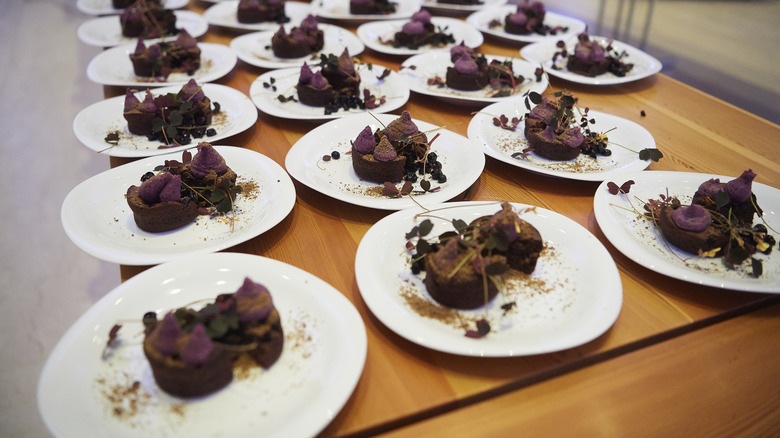Use This Tradition As An Excuse To Eat Dessert In The Middle Of Dinner
Salty or sweet? If you're more apt to choose a sweeter snack or food option than salty several times throughout the week, then you're among a decent percentage of Americans who do the same.
USA Today points out that over 40 percent of consumers eat dessert at least twice a week. With all the new pre-made sweet treats and new recipes coming out each day, we don't blame you. Having a sweet tooth is nothing to be ashamed of. To the contrary, we embrace our refined taste for the sweeter things in life. In fact, dessert has been a part of meal traditions for centuries.
Maybe you have tried our 98 dessert recipes or even our simple five ingredient or less dessert recipes to help satisfy your cravings. Regardless, it actually doesn't matter when you consume your dessert during the day. If you find yourself sitting down in the middle of dinner just wanting to push your meal aside for the dessert, you are actually acting on some older traditions that your ancestors may have practiced.
A slice of cake in the middle of dinner
Move aside Brussels sprouts, your time is done. We'd like our slice of cake right now followed by our next course of roasted chicken. Dessert in the middle of the meal sounds like a dream. If you're one to enjoy a sweet treat any time of the day and wouldn't mind having your dessert earlier throughout your meal — instead of saving it for last — then you would actually be keeping up with old traditions.
According to Food and Wine, desserts used to be served in the middle of a meal. The course was called an entremet, which is defined as a "dish served in addition to the main course of a meal," usually in between the main courses (via Merriam-Webster). It was by the middle of the 17th century that dessert started being served at the end of the meal as a way to end it on a sweeter note.
But don't worry, having dessert in the middle of the meal can still be totally embraced in today's modern era. A lot of upscale restaurants will bring out their own "entremets" in-between courses as a way to help the transition. You can also practice at home and integrate it into your next formal dinner party as a new plating concept that will freshen up and liven up your guests.

